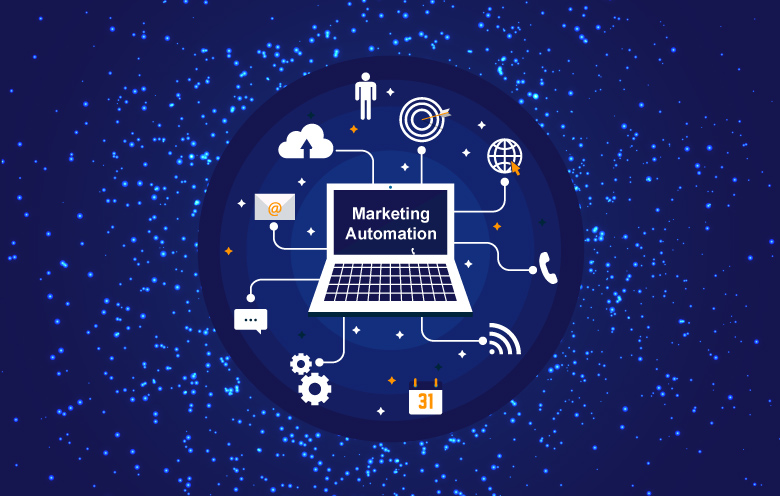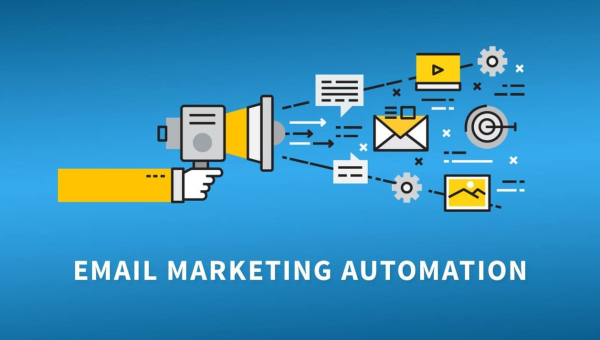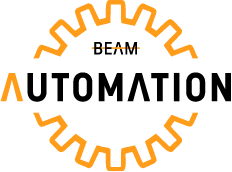5 Free Ways to Double Customer Engagement Using Your Existing CRM Are your customers slipping away or not engaging as they should be? It can be concerning to see this happening, but the good news is that you don’t need new software or a bigger budget to turn things around.
3 CRM Hacks to Drive Sales This Week Without New Leads Struggling to hit your sales targets? You don’t need a bigger marketing budget or a flood of new leads to boost revenue. Your existing CRM is a goldmine of untapped opportunities, waiting to be activated. At BeamAutomation.au, we’ve helped Australian businesses with $1M+ turnover unlock immediate sales using simple CRM strategies—no new leads required.
Customer Relationship Management (CRM) systems are no longer just a nice-to-have; they are now essential. They can manage your entire business, serving as a single source of truth for your customers, sales, marketing, operations, admin, and more. They’ve evolved into powerful platforms that leverage AI and automation to streamline workflows, personalise customer interactions, and drive better results.

Businesses inside the speedy-paced digital surroundings of today are constantly searching out means to improve their operations and promote expansion. A sturdy technique combines marketing automation technologies, synthetic intelligence (AI), and client courting control (CRM) structures. This synergy improves client interaction and increases sales as well as process simplification. Here is how to properly mix these components for the best company growth.
The core of customer relationships is CRM
CRM systems are meant to control a company's relationships with present and prospective clients. They provide a consolidated system for recording interactions, maintaining consumer data, and controlling sales procedures. Using CRM helps companies to better grasp client wants and preferences, hence enabling more tailored interactions.
Main Advantages of CRM:
• Detailed consumer profiles provide companies access that enables them to customise their products.
• CRM solutions provide easy interdepartmental collaboration.
• Automating repetitive chores lets sales staff concentrate on relationship development, therefore boosting sales efficiency.
How Artificial Intelligence is Changing Customer Interactions
Artificial intelligence is changing how companies engage with consumers. By use of AI Automation technology, large data sets may be examined to find trends and patterns, hence helping businesses to make educated choices.
How AI Improves CRM: Predictive Analytics By predicting consumer behaviour, artificial intelligence enables companies to meet demands and customise their marketing plans appropriately.
By offering real-time customer help, chatbots and virtual assistants improve user experience and release human resources for more difficult questions.
AI examines consumer data to provide tailored material and suggestions, hence increasing engagement.
Using Data for Ongoing Development
Integrating CRM, artificial intelligence, and marketing automation starts with data. Consistent examination of campaign results and consumer interactions not only refines tactics but also finds fresh development prospects. Insights from artificial intelligence analytics help companies to change their marketing plans, so guaranteeing their relevance and efficacy. Adapting to shifting business dynamics and consumer tastes calls for constant development.
Encouraging a Cooperative Culture
Integrating these technologies successfully calls for interdepartmental cooperation. Sales, marketing, and customer care departments have to cooperate to exchange ideas and plans. Regular meetings and the same objectives may help to create a cooperative culture by guaranteeing everyone is in line with customer involvement initiatives. Silos may be broken down by companies to provide a coordinated strategy, improving the customer experience and promoting expansion.
Training and Development: Enabling Your Team
Your team's abilities should change with technology. Investing in training and development guarantees that staff members are well-equipped to use marketing automation technologies, artificial intelligence, and CRM systems efficiently. Offering tools and seminars will enable your staff to make the most of these technologies, hence enhancing performance and client engagement. Maximising the advantages of integrated systems and promoting corporate success depend on a well-trained staff.
Adopting Future Trends and Innovation
Sustained growth depends on being ahead of trends as technology advances. Businesses should watch developing technologies like machine learning and sophisticated analytics, as they might improve marketing automation and CRM initiatives even more. Adopting technologies like voice search and augmented reality may help to provide unique consumer experiences that distinguish a business. A forward-looking attitude helps companies to adjust fast to developments and use new technologies to properly include consumers.
Creating Trust with Openness
Building trust is first in an age where people appreciate genuineness. Companies may improve client loyalty by means of CRM and artificial intelligence offering clear communication. Sharing knowledge about how data is gathered and utilised helps consumers to feel more secure. Personalised interactions that respect privacy choices also help to strengthen relationships greatly. Trust eventually drives company expansion by leading to long-term client retention, hence building a devoted consumer base.
Marketing Automation: Efficiently Streamlining Campaigns

Marketing automation is the use of technologies to streamline marketing activities and processes. This covers advertising efforts, social media posting, and email marketing. Automating these procedures helps companies to save time and guarantee consistent messages.
Advantages of Marketing Automation:
Time Savings Automating mundane chores lets marketing departments concentrate on strategy and innovation.
1. Consolidate Client Data
Make sure your CRM system gathers and keeps data from many sources, including social media, email marketing, and website interactions. This unified data centre allows artificial intelligence systems to precisely examine consumer behaviour.
2. Customer Segmentation Automation
Segment your audience with artificial intelligence depending on behaviour, interests, and demographics. This makes it possible for tailored marketing initiatives to speak to certain consumer segments.
3. Tailor Your Marketing Strategies
Use artificial intelligence analysis to provide tailored marketing communications. Tailor material using your CRM data to communicate directly to the needs and interests of various consumer categories.
4. Improve Campaign Performance
Track campaign performance with marketing automation technologies. Examine data to see what succeeds and what fails; change tactics in real-time to optimise impact.
5. Improve Client Engagements
Include artificial intelligence-driven chatbots in your CRM system to provide immediate assistance. This not only increases consumer happiness but also collects useful information that might guide future contacts.
6. Success Measurement: Important Performance Indicators
Measuring performance by appropriate KPIs can help to guarantee the efficient integration of CRM, artificial intelligence, and marketing automation. Here are some key indicators to monitor:
Watch how many consumers keep interacting with your business over time to gauge customer retention.
Examine the proportion of leads that become paying consumers.
7. Campaign ROI:
Evaluate the return on investment for every marketing campaign to find the most successful tactics.
Regularly collect comments to measure consumer happiness and identify places needing work.
Conclusion
Combining CRM, artificial intelligence, and marketing automation may greatly boost your company development by strengthening customer interactions and simplifying operations. Companies may provide a more interesting experience for consumers by centralising data and customising contacts. Beam Automation provides solutions to properly combine these technologies, so guaranteeing your company remains competitive. Adopt this cooperation for ongoing success and development.

For companies wanting to interact with their audience and increase conversions, email marketing is still a potent weapon. The correct tactics and automation technologies enable businesses to simplify their marketing activities, customise interactions, and finally increase revenue. This blog discusses necessary technologies and efficient tactics to improve your automated email marketing.
Knowing Email Marketing Automation
Software is used in email marketing automation to automatically send out tailored messages based on certain triggers or user behaviour. This approach allows businesses to engage with their audience at the right moment, hence increasing conversion possibilities. Automating menial tasks allows marketers to focus on innovation and strategy.
The Need for Automated Email Marketing
1. Automating email campaigns saves time by lowering the need for human sending and monitoring.
2. Automation allows for tailored emails depending on user behaviour, preferences, and demographics.
3. Relevant, timely emails increase engagement and hence boost open and click-through rates.
4. Automated systems provide thorough analytics, hence enabling companies to know their audience and hone their plans.
Important Techniques for Efficient Email Marketing Automation
Divide Your Audience
Segmentation is the process of splitting your email list into smaller groups depending on certain factors such as demographics, purchase history, or engagement levels. Targeted communication that speaks to each group improves the likelihood of conversion.
Send Triggered Emails
Triggered emails are sent depending on user activity, such as signing up for a newsletter or departing a shopping cart. Targeting consumers at key times in their purchasing path, these emails are very successful.
Design Drip Campaigns
A drip campaign is made up of many automated emails delivered over time. This approach nurtures leads by gradually steering them towards a purchase and offering them useful material. Every email in the series maintains interest and engagement by building on the previous one.
Make material relevant
Personalisation is more than just including the recipient's name. Customise material depending on prior encounters, user behaviour, and preferences. This strategy makes emails seem more relevant and boosts conversion chances.
Improve Send Times
Email marketing depends on timing. Study your audience's behaviour to find the ideal times to send emails. Based on user behaviour, automated technologies may assist in planning emails for the best interaction.
Key Instruments for Automated Email Marketing

MailChimp
Companies of all sizes often use Mailchimp. Its simple design, strong automation capabilities, and thorough analytics provide it. Mailchimp lets you effortlessly categorise your audience and design focused campaigns.
HubSpot
HubSpot offers a complete marketing system with strong email automation features. Its capabilities make it perfect for bigger companies, as they offer sophisticated segmentation, A/B testing, and comprehensive reporting.
ActiveCampaign
ActiveCampaign is famous for its sophisticated automation features. A fantastic option for companies wanting to deploy advanced email tactics, it lets people build intricate processes depending on user activity and interactions.
Convert Kit
Convert Kit was created especially for bloggers and artists. Its straightforward automation capabilities and user-friendly segmentation tools make it ideal for beginners in email marketing.
Always in touch
Constant Contact offers a large collection of templates and tools as well as automation. Small to medium-sized companies wishing to improve their email marketing may find its simple platform appropriate.
Success Measurement: Metrics to Track
Monitor important indicators to make sure your email marketing automation initiatives are successful:
Open Rates: Shows how many people read your email.
Click-Through Rates (CTR): Calculates the proportion of email recipients that clicked on a link under Click-Through Rates (CTR). Tracks how many recipients performed the specified action, such as buying.
Bounce Rates: Indicates the proportion of undelivered emails.
Unsubscribe Rates: Aids in measuring audience involvement and happiness.
Creating Interesting Subject Lines
Engagement depends on the subject line of your email, as it is the initial impression for recipients. A good subject line should be obvious, brief, and interesting. Use action phrases and a feeling of urgency to inspire openings. A/B testing various subject lines might help you improve your strategy by revealing what connects with your audience. Keep in mind that personalisation in subject lines may greatly raise open rates; adding the recipient's name or an allusion to prior contacts can help to connect immediately.
Using A/B Testing for Ongoing Development
By implementing split testing, also known as A/B testing, you can achieve maximum results from your email marketing strategies. The practice of sending duplicate emails to separate target audiences allows you to identify which version produces superior open rates, click-through rates, and conversion outcomes. Test different components starting from email subject lines through content sections and finalising with the call-to-action button. Your organisation can improve its marketing strategy through data-driven decision-making, which adapts to your audience's needs better.
Combining Email Campaigns with Social Media
Social media collaboration with your email marketing initiatives expands both audience size and engagement numbers. Add social media profile links to emails in order to direct your readers from email to social media pages. Your social media pages can link to emails, which deliver more potential subscribers to your email sign-up pages. Your email content should include user-generated social media materials to create a sense of community where people become more likely to engage. Your brand becomes more visible across multiple platforms because of the combination with this multi-channel strategy.
Conclusion
Increasing conversions and improving client relationships depend much on automated email marketing. Businesses may simplify their marketing initiatives and get improved outcomes by using the correct tools and using efficient techniques. Beam Automation provides many tools to assist you in maximising your email marketing, hence guaranteeing the efficacy and interest of your messages. Begin changing your email marketing right now!



